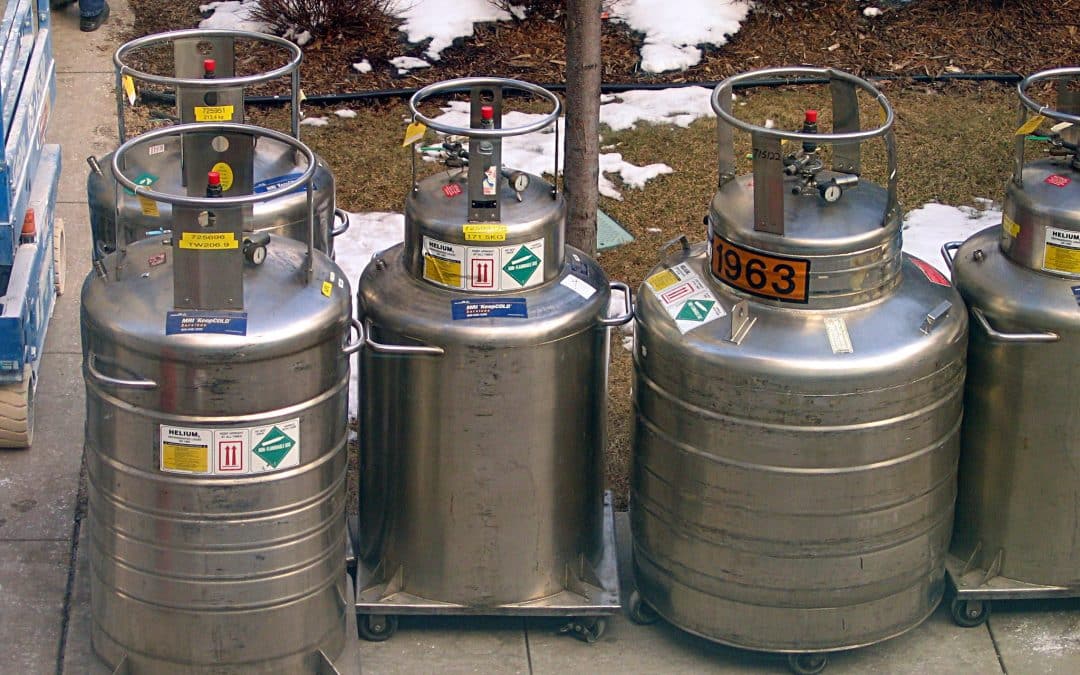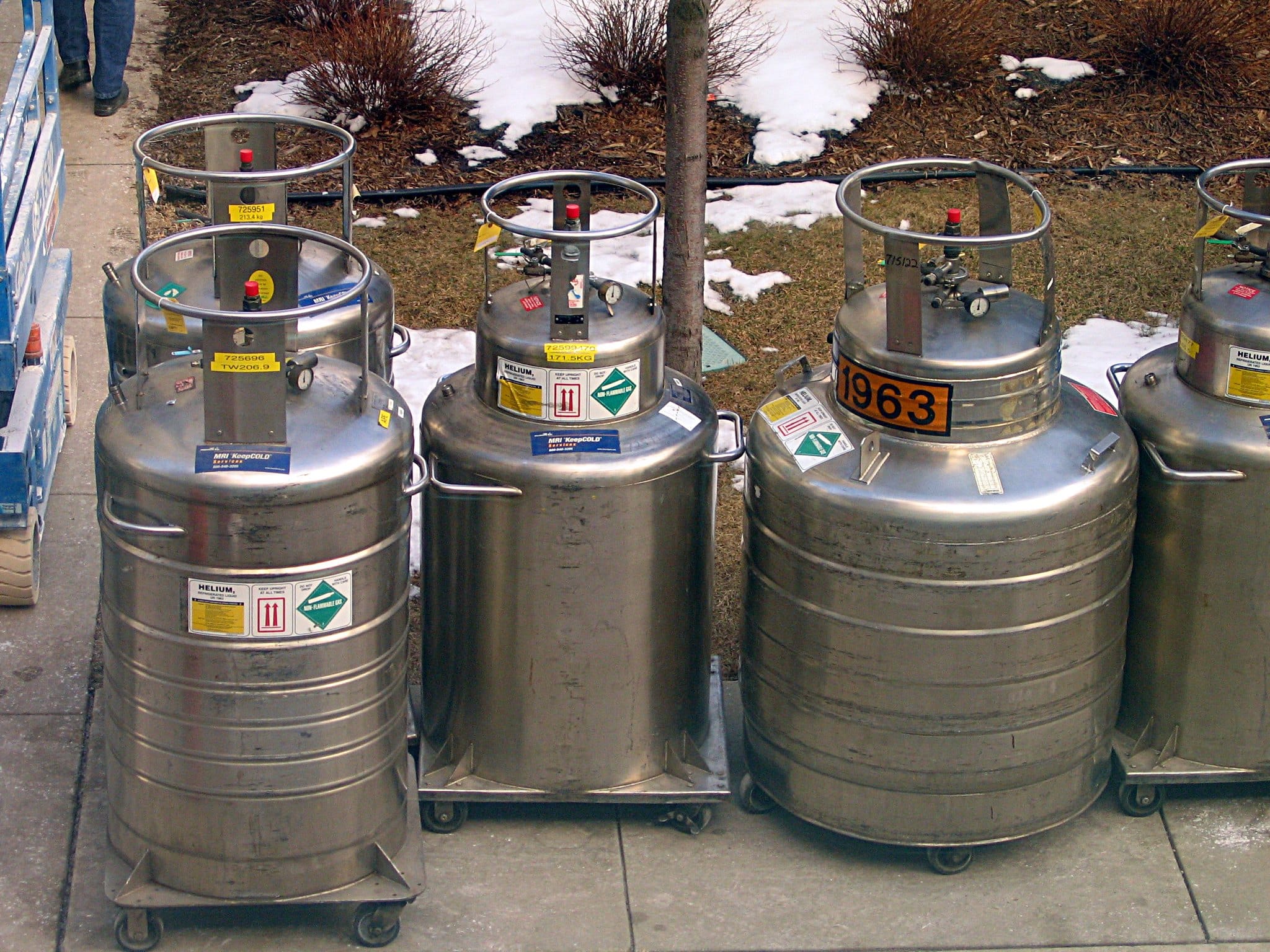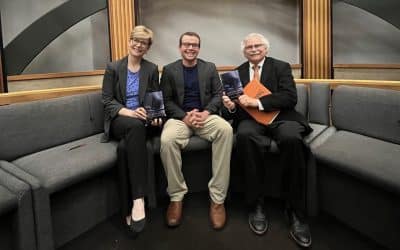Helium in gas form. Photo from Michaela Pereckas via Flickr
State and County Officials Grapple With Helium Extraction Policies Near the BWCA
By Joe Friedrichs
A company tapping into rich reserves of helium near the Boundary Waters could “drink the milkshake” of local and state governments unless they quickly figure out how to regulate the industry.
While most people spent the winter griping about a lack of snow, a team of researchers were busy looking for helium near the Boundary Waters Canoe Area Wilderness.
And they found what they were looking for.
In late February, researchers working for Pulsar Helium tapped into a concentration of helium in Lake County near the edge of the BWCA. The state currently has no policy or royalty-based system in place for collecting money from helium extraction. In a classic scene in the film “There Will Be Blood,” Daniel Day-Lewis uses the example of drinking a milkshake through a straw to extract what’s beneath the surface of the earth.
(Think of the milkshake as the helium in this example, with Day-Lewis being Pulsar Helium and the young preacher as the government.)
If there is no policy in place to regulate helium, many millions of dollars worth of the element can be extracted from beneath state and federal land without any royalties being paid to the government.
Only recently, state officials from Minnesota started working to regulate the industry. State Sen. Grant Hauschild introduced legislation this month to set up royalties on helium exploration and extraction in Minnesota. It’s a bit of a scramble, as the state currently does not regulate the practice of taking helium from the earth, including near the Boundary Waters.
Helium was first discovered accidentally near the BWCA in 2011 by a team of researchers looking for precious metals such as copper and nickel. The site where the helium was found this winter is near Highway 1 and Lake County Highway 2, not far from the small community of Isabella and the center of the 2021 Greenwood Fire that led, in part, to the closure of the BWCA that year. Pulsar is calling the site “The Topaz Project.” The company reports that “Topaz has been drilled with helium contents identified of up to 13.8%, making it one of the highest-grade discoveries in history.”
The helium deposit in Minnesota is getting global attention. Reuters, an international news organization similar to the Associated Press, published a seven-minute documentary this month focusing on Pulsar’s helium project in Minnesota.
Helium is not just for balloons at a birthday party. It is involved in fuel systems in spacecraft, MRI scanners, fiber cables used for Internet, nuclear fusion, quantum computing, airships, technical diving, and other uses across the globe.
Helium is the second most abundant element in the universe after hydrogen, according to the U.S. Department of the Interior. It is a colorless and odorless inert gas. However, at temperatures near absolute zero, helium is a fluid. Of all the elements, helium is the most stable, according to the Feds, meaning it will not burn or react with other elements.
The world’s largest primary helium source is the U.S. National Helium Reserve in Texas, according to Pulsar, which has recently been privatized and will be depleted in the next few years.
As Pulsar continues to explore for more helium and how to extract it from the edge of the Boundary Waters, state officials and agencies will work toward regulation. This leaves local officials in Cook, Lake, and St. Louis counties in a holding pattern, unless they act at a more grassroots level. Lake County could issue a conditional use permit to Pulsar at any time and the company could start extracting, according to Lake County officials.
Matt Huddleston is the county administrator in Lake County, which includes Isabella, Silver Bay, and Two Harbors, in addition to other small communities near the BWCA. He said the Pulsar site is located on 40 acres of privately owned land in Lake County. The area surrounding the drill site includes state and tax forfeited land. This means the helium beneath these lands could lead to royalties needing to be paid, assuming the state sets up the framework for this to take place. In other words, the state and local governments would need to set up a policy where Pulsar and other companies pay for helium they extract from the surrounding area near a well.
Huddleston spoke with P&P’s Joe Friedrichs about the helium deposits located near the edge of the BWCA. Listen to their conversation in the audio shared below.
Other Recent Articles
Congress Talks Wolves and Mining As Quota Season Starts in the BWCA
Photo by Eva Blue on UnsplashNewsToo many wolves and not enough mining near the Boundary Waters Canoe Area Wilderness. These were two themes brought to the forefront of Congress this week at the urging of U.S. Rep. Pete Stauber, who represents all of northeastern...
Young Cancer Survivor Talks About the Importance of Wilderness
Julia Ruelle (stern) paddles in the BWCA during her "parent-free trip" the wilderness. Submitted photoNote: Julia was the winner of Ely Outfitting Company’s first annual Boundary Waters Teen Essay Contest in 2018. She was 16 years old and a sophomore at Minnetonka...
Minnesota Governor and Media React to Last Entry Point
(From left) Cathy Wurzer, Joe Friedrichs and Eric Eskola on the Almanac set. Photo by Kari KennedyI was in an elevator with Cathy Wurzer. So, naturally, we started to talk about death. It’s a topic we’re both intrigued by. Death. Dying. The end. I just wrote a book...





